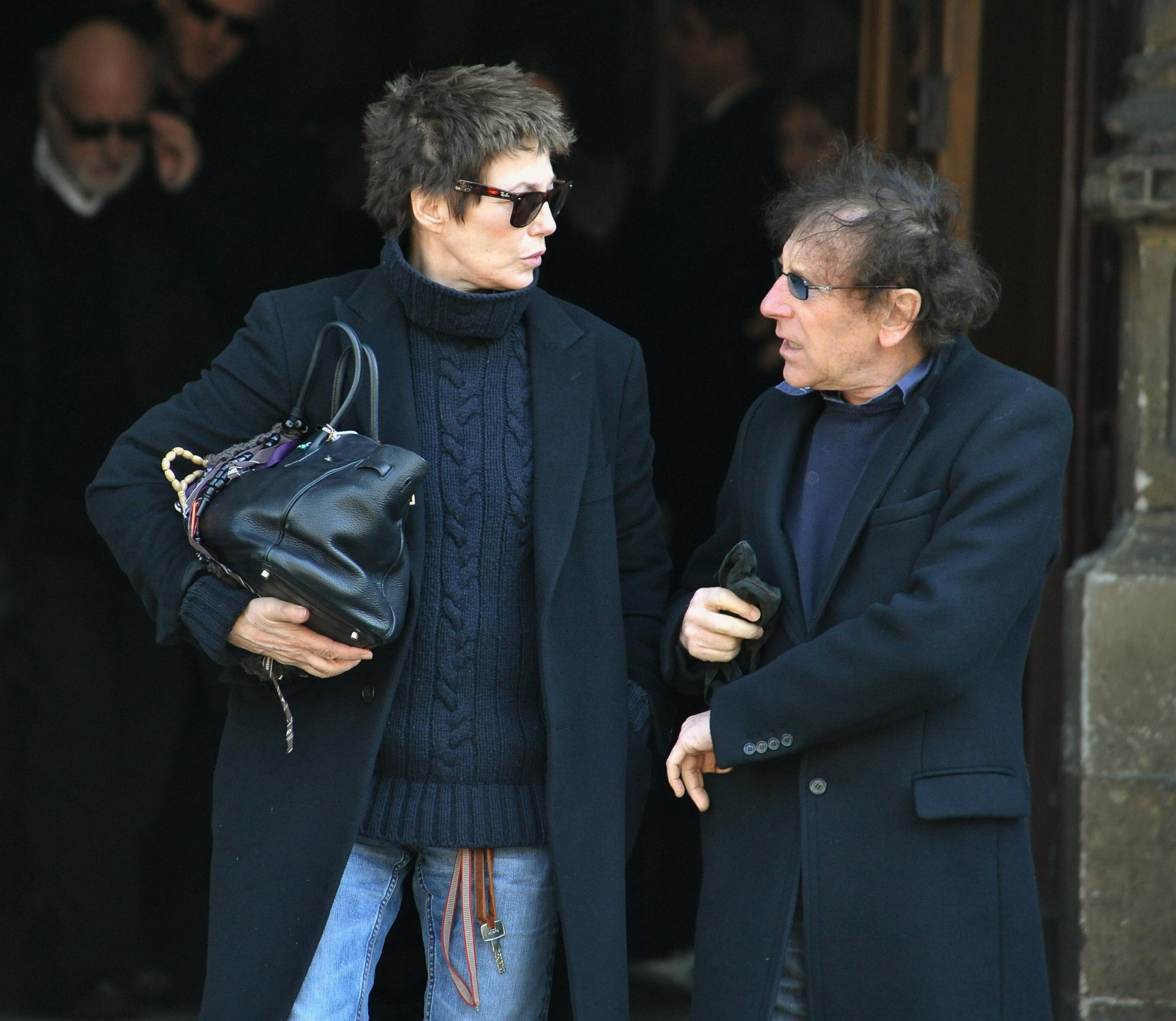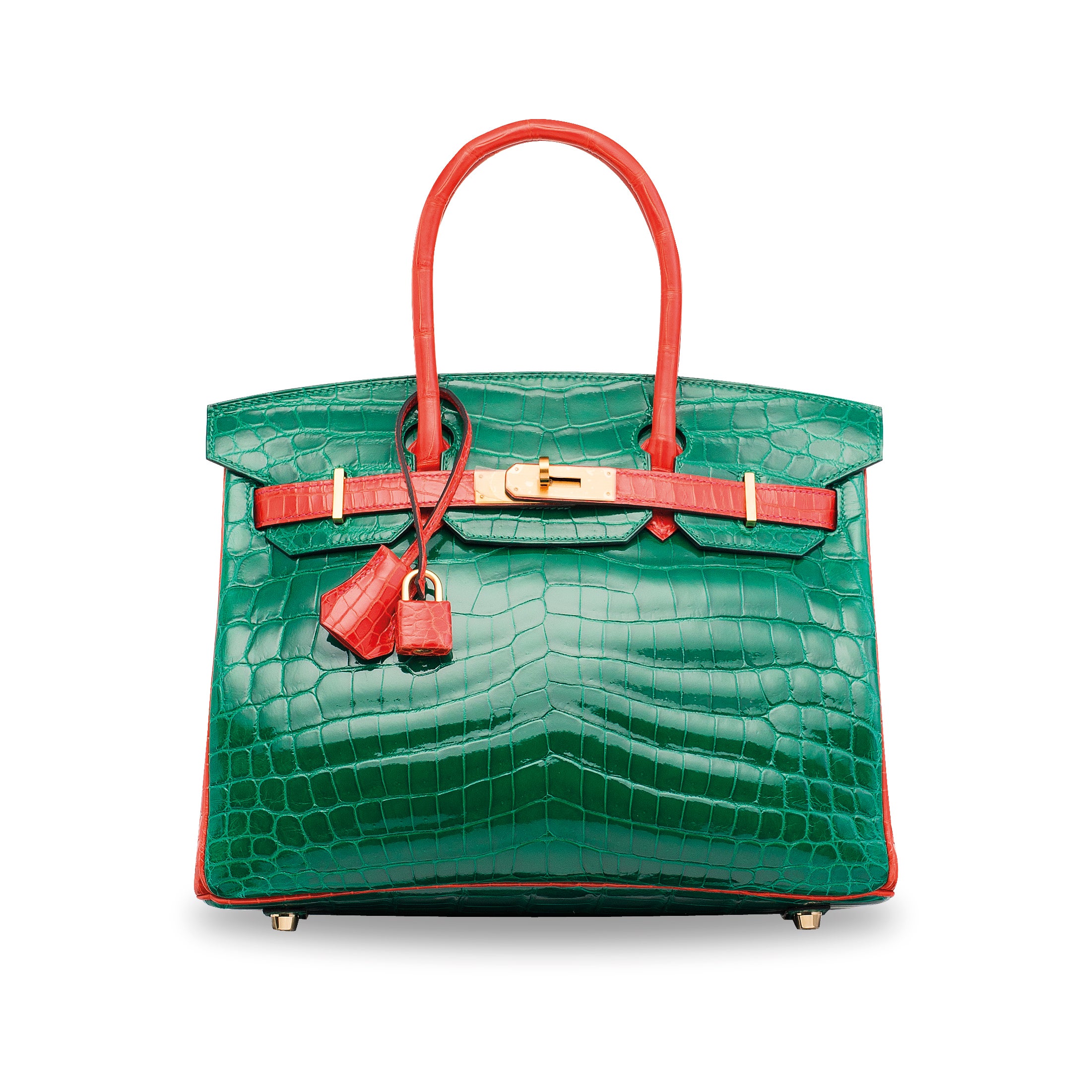Moneybags: is the frock-market the new stock-market?
In June, Christie’s are auctioning the world’s two most expensive designer handbags. They’re both Birkins and their combined value is over a quarter of a million pounds. They’re unique, sure - but those figures are not unheard of. Alexander Fury examines the new market for handbags whose craftsmanship - and price - is seen on a par with works of art. And arguably as tempting an investment.
.jpg)
Your support helps us to tell the story
From reproductive rights to climate change to Big Tech, The Independent is on the ground when the story is developing. Whether it's investigating the financials of Elon Musk's pro-Trump PAC or producing our latest documentary, 'The A Word', which shines a light on the American women fighting for reproductive rights, we know how important it is to parse out the facts from the messaging.
At such a critical moment in US history, we need reporters on the ground. Your donation allows us to keep sending journalists to speak to both sides of the story.
The Independent is trusted by Americans across the entire political spectrum. And unlike many other quality news outlets, we choose not to lock Americans out of our reporting and analysis with paywalls. We believe quality journalism should be available to everyone, paid for by those who can afford it.
Your support makes all the difference.Handbags are big business - and for once, that doesn’t refer to the fashion houses making millions from particular styles they dub to be “It”. The most in-demand bag, in fact, is one you can’t even purchase in a store - the Hermès Birkin. It’s named after Jane Birkin, who inspired the design - on a flight in 1981, she griped to a fellow passenger of the impracticalities of the current hold-all she was toting. Said passenger happened to be Jean-Louis Dumas, chairman of Hermès, who subsequently designed a bag meeting Birkin’s demands, and named it after her.
There are a number of reasons for the Birkin’s overwhelming and enduring popularity. Advertising isn’t one of them - Hermès may feature the bag in a campaign, but they’re as likely to focus on a coat, a printed silk scarf or even a saddle (Hermès was first established as a harness workshop in 1837, and a horsey bent runs through their wares). The longevity of the design - bar occasional tweaked versions by the house’s designers (Jean Paul Gaultier offered a variety of variations on dimensions during his tenure as creative director from 2003 to 2010) - ensure it’s a solid investment. Inured to the vagaries of fashion, it can be used year in and out. Hermès’ craftsmanship is second to none - no glue is used in the construction of the bag, and each is completed by a single craftsman, identified by a stamp on the interior, which enables the bag to be returned to the person who originally made it for any repairs. The bag takes around 18 to 20 hours to construct.

Apocryphal tales abound of customers swanning into Hermès boutiques and purchasing their first Birkin with ease, but generally speaking, you’ll put your name on a waiting list, and wait. There’s a sub-plot to an episode of Sex and the City that revolves around a character’s extreme attempts to bag the bag. Personal relationships with Hermès staff are presumed to help circumvent a list that can, allegedly, require up to six years of patience (helping to save the five-figure sum often demanded for the bag). In 2004, while in the dock on insider trading charges, domestic goddess Martha Stewart was tried and convicted in the court of public opinion when she came to court clutching a Birkin, an unfortunate symbol of wealth itself also subject to well-documented insider swindling to acquire (she was, of course, also later convicted by a court of law). Approximately 70,000 are made each year (a number unsubstantiated by Hermès), which does not meet demand. Hence the fact that today, many are turning to a secondary market - which Hermès would not comment on - to secure the coveted item.
That makes it sound illicit and shady - and there is plenty of that. In 2012, Hermès won a judgement and US$100 million in damages against 34 websites selling fake copies of its goods. The counterfeits ran the gamut, but a glance at some of the websites’ urls - HermesBirkin-Bags.org, or HermesBags-OutletStore.com - make clear the focus of the trade. In 2008, Hermès won another lawsuit, against online auction site eBay, for failing to crack down on a vendor selling fakes.

Nevertheless, where there is demand a supply will be found,. That legitimate supply is coming from various sources, including legitimate resale websites like TheRealreal.com and VestiaireCollective.com (both of whom authenticate items they sell), and specialised auction houses like London’s Kerry Taylor Auctions, whose vintage clothing sales are punctuated by high-impact accessories, and the high prices achieved by the timeless appeal of bags like Hermès’ Birkin and Kelly styles, or Chanel’s 2.55. That moniker that denotes the month and year - February 1955 - of the bag’s design, and it has remained unchanged. Most bidders buy these bags to use, not just to admire.
The demands of the market for luxury handbags specifically - and Hermès Birkins in particular - have pulled others into the game. The auction house Christie’s is the most notable name involved: in 2012, a department was created devoted entirely to Handbags and Accessories, which are the subject of specialist sales. The department has expanded, and now has a presence in Hong Kong, New York, Paris, Shanghai and as of this year, Dubai.
Ring any bells? Those are all hot-spots for luxury purchases. Prior to establishing handbags as a separate category, Christie’s grouped the into “Elegance Sales,” distinct from Costume and Textile. “When handbags were positioned alongside jewellery and watches, rather than historical fashion items, the perception began to shift,” says Matthew Rubinger, who heads the auction house’s handbags and accessories department across EMERI (Europe, the Middle East, Russia, India). “Collectors of contemporary handbags began to emerge… the majority are private buyers -as opposed to dealers or fashion houses, although these are both represented. Of these private buyers, the majority intend to use the piece that they buy at some point.”

Christie’s next sale, slated for June 1st in Hong Kong, contains a pair of bags being touted at the most valuable in the world. Both are Hermès. “The collector market is led by Hermès, there is no doubt about that,” states Rubinger, who dubs the duo of styles to be sold as “masterpieces”. The bags, both Birkins, are in a rare crocodile, painstakingly dyed to recall the Himalayan mountains, and the hardware is gold encrusted with diamonds - the smaller style, with 145 diamonds of total carat weight 5.57, the larger 245 at a total weight of 9.84 carats. Combined, their high estimates are just shy of half a million US dollars, not including an auction buyers premium - the larger, a Birkin 30 (the number denoting the measurement, in centimetres, of the width of its base) carries a high estimate of US$260,000; the smaller, a Birkin 25, is pitched at US$190,000. If the estimates are reached, they will smash the world record set by Christie’s last spring, for a piece selling at US$222,928 - another crocodile bag, set with diamonds. Another Hermès Birkin.
The prices are exceptional, but they’re not unique. “Our clients value their privacy greatly, so we are unable to share specific transaction details,” says Cristina Miller, head of dealer relations for the website 1stdibs.com. 1stdibs is, for want of a better term, an antiques aggregator, allowing a selection of dealers across the world a combined marketplace for high net-worth customers to peruse. The site’s own tagline is “The most beautiful things on earth.” Hence, you can find art by Warhol and Kandinsky, furniture by Prouvé and Jean-Michel Frank, and lots of Birkins. “We can tell you that we’ve sold multiple pieces in the six figure - i.e., US$100,000 plus - range,” she says. And she’s talking arm-candy, not art.
Here are some odd facts about the handbag market. The newer stuff sells better - “Where the market is today, the focus is on the contemporary pieces - the last 20-25 years,” states Rubinger. “Vintage pieces - 1950’s-1980’s - are also of interest but the values are not as high.” Celebrity ownership sometimes helps, but generally isn’t a huge draw. “We find that buyers in this space favour the combination of maker, condition, and material, with the overall rarity at a premium,” say Miller, who notes celebrity ownership as “validation,” rather than incentive to buy. “Provenance can have a huge impact,” allows Rubinger, “Elizabeth Taylor is the best example of that: her handbags and accessories sold for multiples of their estimates. Generally, this is driven by the collectors for the person, rather than collectors of the object.” In other words, an entirely different market - and the exceptional value of these handbags is down to their inherent value as objects, rather than the aura of ownership of Liz Taylor or the Duchess of Windsor (both of whom have sent handbag prices skyrocketing in the past)

There is a point worth highlighting: according to an article on the website of American Vogue, the Hermès Himalayan-inspired Birkin about to be auctioned originally cost US$300,000 when retailed in 2008 - US$40,000 more than the current high auction estimate. It slightly dulls the notion of the frock-market as the new stock-market.
Can the handbags themselves ever make more than they originally retailed for? “Some very rare examples, yes,” states Rubinger. “They will sell for multiples of their retail. Especially earlier contemporary pieces and vintage pieces, where retails were substantially lower than today. In 1989, a Lizard Mini Kelly 20 [another Hermès style, named after Grace Kelly] cost US$2,595. Last year we sold a limited edition version from that year for US$45,363.” That’s a hefty mark-up.
Given the high values being realised, you wonder if people really intend to buy these bags to wear, or purely as an investment, like those crated-up masterpieces bought to bolster billionaires’ portfolios rather than to hang on walls. Will these Birkins ever see the light of day? “These are people with deep, important collections,” reasons Rubinger. “The top pieces may seldom, or never, get used. Our clients are certainly interested in the investment element, and are quite savvy with their purchases, even at the very highest levels, but ultimately these purchases tend to be driven by collection and passion.”
Despite the high prices already being realised at auction, Rubinger suspects this is only the beginning. “The handbags auction market is most similar to that of watches and jewellery. Interestingly, of the two, I have found the most similarities with watches, even though watches is a primarily male-driven market where handbags is not,” he says. “I believe that the handbags collector market is where the watches collector marker was 30 years ago – auctions have just begun to emerge as the place where top buyers can find the rarest pieces, rather than a marketplace for bargains.” Christie’s doesn’t comment on specific collectors - however, fashion magazines are filled with images of closets crammed with Hermès dust-bags, shielding Birkins. Kimora Lee Simons, Tamara Ecclestone, Lisa Vanderpump (a Real Housewife), various Kardashians and a few lesser-known but deep-pocketed types (North American haute couture clients, often) have showcased their Birkin back-catalogues.
I doubt even they would count US$260,000 as a bargain - but maybe it’s just the tip of the iceberg, and in future we’d regard a crocodile and diamond-encrusted Birkin at that price as a steal. We may also see fit to hang it next to a Warhol.
They’re already selling alongside them, after all.
Join our commenting forum
Join thought-provoking conversations, follow other Independent readers and see their replies
Comments